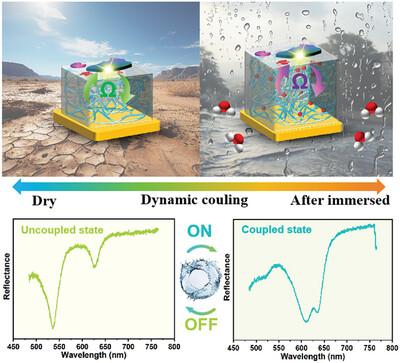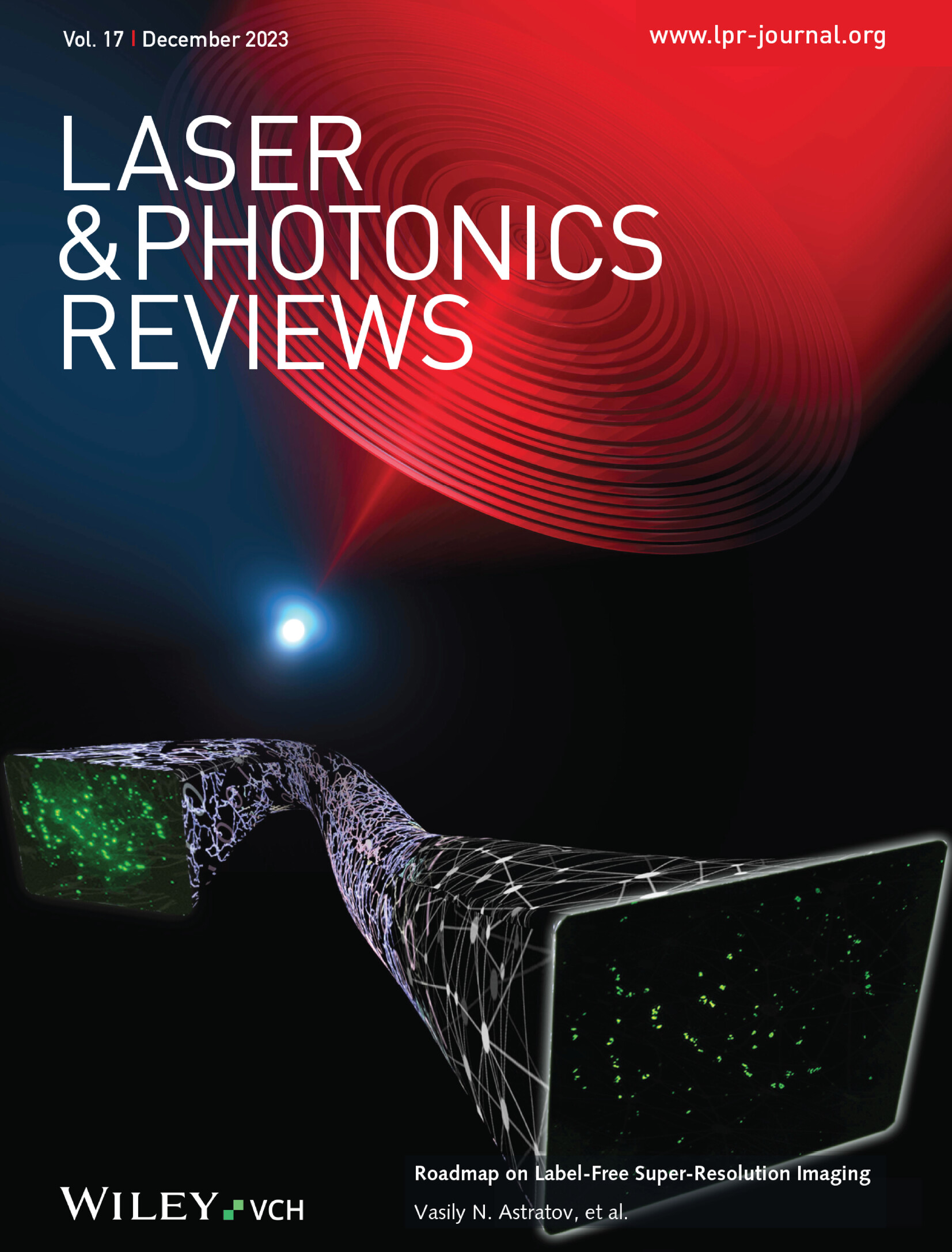范德瓦耳斯材料与水凝胶辅助光腔中光-物质相互作用的高度可逆调谐
IF 9.8
1区 物理与天体物理
Q1 OPTICS
引用次数: 0
摘要
通过以拉比分裂(Rabi splitting)为表现形式的空腔系统控制光物质相互作用对于纳米光子学至关重要。然而,实现光物质相互作用的便捷和主动调节仍然是一项艰巨的挑战。传统方法往往需要复杂的设计或精细的纳米制造才能解决这一问题。本文通过实验展示了一种简便的策略,即在介电-水凝胶-金属谐振器的基础上建立一个具有可逆调制响应的可调耦合系统。通过控制顶部二硫化钨层的厚度,无需纳米定位或光刻,就能在大规模水凝胶膜上灵活操纵激子-空腔相互作用中的弱-中-强转变。最重要的是,利用水凝胶的膨胀敏感性,通过调节谐振器的干态/浸润态,可以可逆地定制耦合强度,并具有极佳的可重复性。基于水凝胶的新型纳米腔体集迷人的设计和日常刺激等优点于一身,为开发偏振子激光、开关和传感器等主动实用集成光学器件迈出了开创性的一步。本文章由计算机程序翻译,如有差异,请以英文原文为准。

Highly Reversible Tuning of Light-Matter Interactions in Van der Waals Materials Coupled with Hydrogel-Assisted Optical Cavity
Controlling light-matter interactions via cavity systems manifested by Rabi splitting is paramount important for nanophotonics. However, achieving conveniently accessible and active tuning of light-matter interactions remains a formidable challenge. Traditional approaches often necessitate either sophisticated design or meticulous nanofabrication to address this issue. Here, a handy strategy is experimentally demonstrated to build an adjustable coupling system featuring reversibly modulated responses based on dielectric-hydrogel-metal resonators. By controlling the top tungsten disulfide layer thickness, the flexible manipulation of weak-intermediate-strong transitions in exciton-cavity interactions is revealed on a large-scale hydrogel membrane without nanopositioning or lithography. Crucially, by leveraging the inflation sensitivity of the hydrogel, the coupling strength can be reversibly tailored with excellent reproducibility by modulating the resonator's dry/immersed states. The combined merits of captivating design and daily stimulus render the novel hydrogel-based nanocavities as a groundbreaking step toward the development of active and practical integrated optical devices, such as polariton lasing, switches, and sensors.
求助全文
通过发布文献求助,成功后即可免费获取论文全文。
去求助
来源期刊
CiteScore
14.20
自引率
5.50%
发文量
314
审稿时长
2 months
期刊介绍:
Laser & Photonics Reviews is a reputable journal that publishes high-quality Reviews, original Research Articles, and Perspectives in the field of photonics and optics. It covers both theoretical and experimental aspects, including recent groundbreaking research, specific advancements, and innovative applications.
As evidence of its impact and recognition, Laser & Photonics Reviews boasts a remarkable 2022 Impact Factor of 11.0, according to the Journal Citation Reports from Clarivate Analytics (2023). Moreover, it holds impressive rankings in the InCites Journal Citation Reports: in 2021, it was ranked 6th out of 101 in the field of Optics, 15th out of 161 in Applied Physics, and 12th out of 69 in Condensed Matter Physics.
The journal uses the ISSN numbers 1863-8880 for print and 1863-8899 for online publications.

 求助内容:
求助内容: 应助结果提醒方式:
应助结果提醒方式:


